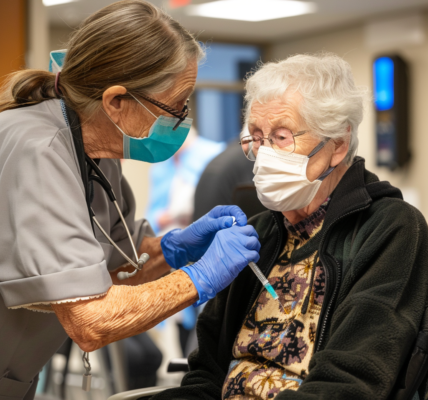Lupus, a complex and often unpredictable autoimmune disease, has long been regarded as incurable. Characterized by a malfunctioning immune system that can affect various organs, lupus manifests differently in each patient, leading to a wide range of symptoms. From skin lesions resembling wolf bites, a nod to its historical name, to more severe complications like kidney failure or fluid accumulation around the lungs, the disease presents unique challenges for both patients and healthcare providers. Despite the absence of a cure, recent breakthroughs in treatment have sparked renewed hope in the medical community.
In a groundbreaking study conducted in Germany two years ago, researchers unveiled a revolutionary approach to treating lupus. The study focused on five patients suffering from uncontrolled lupus who underwent a novel treatment known as CAR-T-cell therapy, originally developed for cancer treatment. Remarkably, all five patients achieved complete remission after the therapy, which effectively eliminated their dysfunctional immune cells. One patient has remained symptom-free for nearly four years, raising questions about the potential for a cure.
Dr. Anca Askanase, a rheumatologist at Columbia University’s medical center, expressed her astonishment at the results. “We never dared to think about the cure for our disease,” she stated, highlighting the significance of these findings. The success of CAR-T-cell therapy in these patients has ignited interest in exploring similar treatments for other autoimmune diseases, signaling a potential shift in the way such conditions are approached.
Autoimmune diseases, including lupus, are often shrouded in mystery regarding their origins. The immune system, which is designed to protect the body from external threats, mistakenly attacks healthy tissues, leading to a range of debilitating symptoms. This misfiring of the immune system can be triggered by various factors, including genetics, environmental influences, and infections, making it difficult to pinpoint a singular cause.
The traditional understanding of lupus has centered around managing symptoms through medications such as corticosteroids and immunosuppressants. While these treatments can help control flare-ups and reduce inflammation, they do not address the root cause of the disease. The prospect of achieving remission through innovative therapies like CAR-T-cell treatment offers a tantalizing glimpse into the future of autoimmune disease management.
CAR-T-cell therapy involves modifying a patient’s own T cells, a type of white blood cell crucial for immune response, to better target and eliminate the rogue cells responsible for the autoimmune attack. This personalized approach has shown promise in treating certain cancers, and its application to lupus marks a significant advancement in the field of immunology.
As researchers continue to explore the implications of CAR-T-cell therapy for lupus and other autoimmune diseases, the findings from the German study may pave the way for further clinical trials and potential treatment options. The idea of a cure, once deemed impossible, is now entering the realm of possibility, inspiring hope among patients and medical professionals alike.
The journey towards understanding and effectively treating lupus is ongoing. While the recent breakthroughs are encouraging, they also highlight the need for continued research and investment in autoimmune disease therapies. The complexities of the immune system and the individual nature of autoimmune diseases necessitate a multifaceted approach to treatment, combining innovative therapies with traditional methods.
In conclusion, the evolving landscape of lupus treatment reflects a broader trend in medicine towards personalized and targeted therapies. As scientists and clinicians work together to unravel the mysteries of autoimmune diseases, the potential for transformative treatments continues to grow. The hope for a future where lupus can be managed more effectively or even cured is becoming increasingly tangible, marking a significant milestone in the fight against this challenging disease.





